During a seminar in the United States focusing on the benefits of standing meditation and tai chi, Chen Qingzhou (Chen Ching Joe) was asked: what was the most important thing that someone could do to improve. He responded:
“I will tell you exactly what to do and it will improve your health, tai chi, your martial and mental abilities, and will it only take you three minutes a day.”
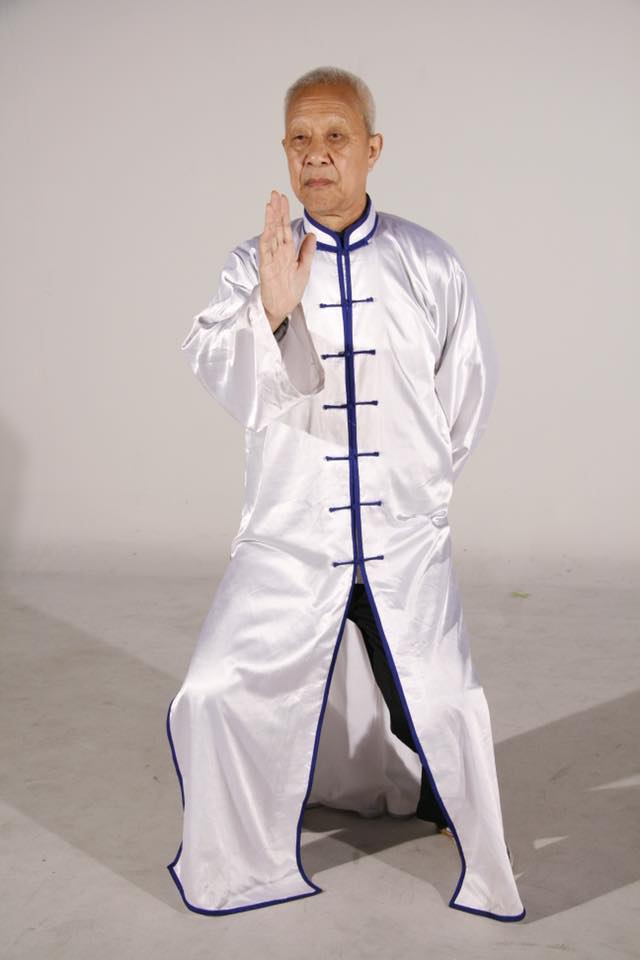
Are you on the edge of your seat? We were.
“What is it?” we asked.
“Stand,” and he assumed a Zhan Zhuang (post stance) posture.
Standing meditation is a form meditation done in an upright posture while holding static poses with the arms and elongating from the tailbone through the crown of the head.
The benefits of standing meditation fall into 3 main categories: Mental (e.g. increased calmness, reduced anxiety), Healing (e.g. chronic fatigue, arthritis, joint pain), and Strength (e.g. increased power from the legs, stamina, balance) and are based on the body’s ability to increase and improve it’s energy. These benefits have been documented by Taoists and martial artists for hundreds of years.
Did I heed his words? No, not initially at least.
I started out strong for a few weeks but eventually began to skip and then abandon the practice. Also understand that we spent a weekend working with him and had direct correction. Theoretically, I was given the key to improve my practice, I received precise instruction, and the time investment seemed completely doable.
Without buy-in no one sticks with any meditation practice.
Why did I fail at first? Two main reasons: The posture is not comfortable, even painful at times. Without understanding the physical benefits of standing meditation it is difficult to keep going. Secondly, without understanding or even knowing about the mental and health benefits of standing meditating, I have found that my students (and me!) are not likely to continue. So that’s what this article is about. The benefits of standing meditation are worth their weight in gold. We just need to know why we are doing the practice so that we continue until we reap the rewards.
Here is what it feels like: You assume a posture which is like you are about to sit in chair that does not exist. Your spine is erect and you are breathing deep into the belly. Your thighs start to burn and begin to shake from holding your upper body’s weight. You begin sweating, and your back may ache a bit. Your mind rebels and you have to fight to slow your breath down and remain in the posture. Yes, all in 180 seconds. The translation from Chinese describing standing meditation is that “you have to eat bitter.”
Truth be told, standing meditation can be boring and painful. The accumulated knowledge that follows created the buy-in necessary for me to commit to practice for a series of days until the benefits could be felt.
What are the Physical Benefits of Standing Meditation?
While the standing meditation practice did not stay with me initially, the allure of the benefits of standing meditation did. I did research to try to understand why practitioners of standing arts (Chen Tai Chi, Qi Gong, Yiqian) are so adamant about the benefits of standing meditation. I’ve come around to understand the value of standing and why Chen Qingzhou’s words are excitingly true. Secondly, for many of us it’s difficult to make tangible progress with meditation and this is one way to quickly experience the benefits.
Here is what is happening physiologically during standing meditation:
Bone marrow is the spongy tissue found inside your bones. In the larger bones— such as your spine, breastbone, hips, ribs, legs, or skull—bone marrow contains cells that produce approximately 500 billion white blood cells, red blood cells, and platelets per day (hematopoiesis). During deep standing meditation, you are asking your large bones and posture to take back your body weight when it is normally held up by furniture and stabilizer muscles. This creates intense pressure on these structures and acts as a catalyst for activity. Zhan Zhuang puts a flame under the caldron that is directly responsible for your immunity and rebuilding tissue. 500 billion blood cells! The magnitude of the bone marrow’s task is unequaled. Pretty elegant training system.
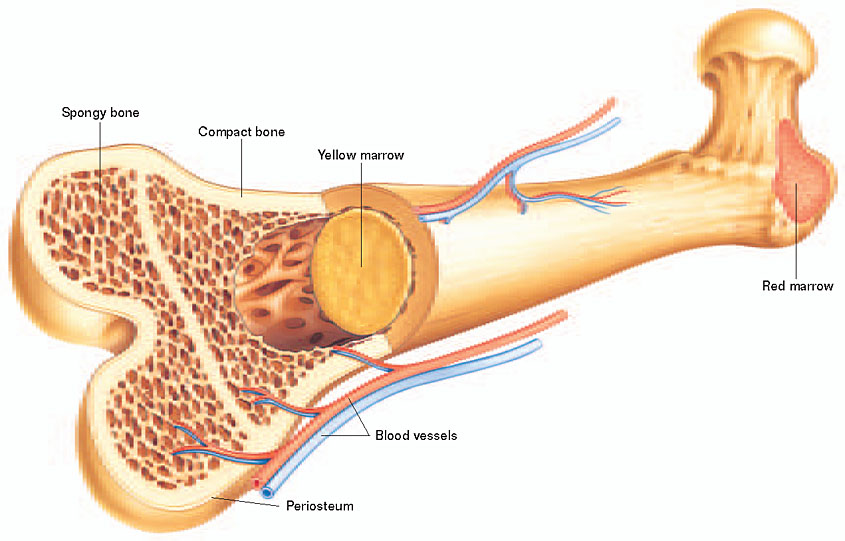
Got your colored pencils ready? Here is a page on Long Bone Structure from the Anatomy Coloring Book. It will take you 5 minutes to color and brings the point home: Long Bone Structure Coloring Page
What are the Martial Arts Benefits of Standing Meditation?
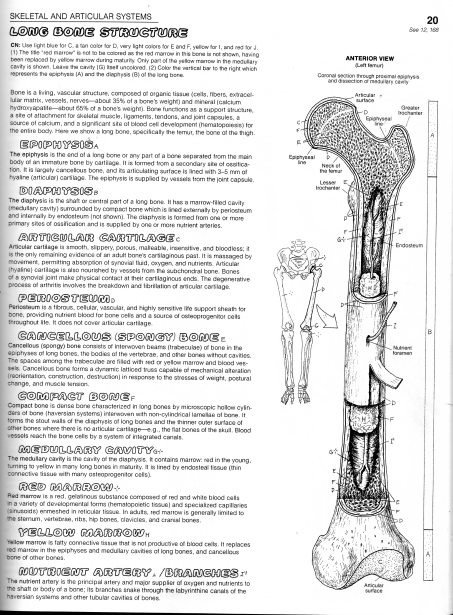
Martial artists are continually moving. This leads many of us to skill past some of the core principles that should be present in all of our movements. As simple as this sounds, standing in a posture for a while causes tension which feels like pain. This is direct feedback for where you are holding tension and where your posture is incorrect.
8 Tai Chi Benefits from Standing Meditation
- Trains you to lower your shoulders
- Trains you to have your armpits and inguinal crease (kua) open to improve blood flow
- Trains your arms to sink into the correct posture with the elbows pointing down
- Shows how to obtain good posture by pressing up with the crown of the head and down with the tailbone simultaneously
- Trains you to sink your weight
- Gives you time to focus on deep belly breathing which is harder to do when you are moving
- Improves balance
- Teaches grounding, or the ability to transmit force up from the ground.
These are all reasons we practice tai chi and these are all things that we continually work on. But, how many of us are taking the time to focus on them in the same way a musician would pull a chord out of song to practice it? And if you are not doing standing meditation in your current tai chi class, you are not alone. Many classes neglected something that used to be a part of every session.
“As we continued our visit: Hall of Abbot, Hall of Damo. On the uppermost level of Shaolin Temple sits the One Thousand Buddhas Pavilion. From the outside, it seems a quite ordinary hall of weathered gray planks and stone, but inside 48 indentations in the stonework of the floor immediately grab the attention. Careful examination reveals they are set in pairs and positioned in straight rows, each depression approximating the size and shape of a human foot. In fact, decades of stamping feet of practicing monks eroded the stone slabs. A 70 years old master said: “During the past Chinese dynasties monks used to practice post standing but later this practice was forgotten. You should take this as an important indication.”
Shaolin, top martial art of past Dynasties- First edition 1982
If you are looking for further reading, the best summary of martial improvement from standing meditation can be found in Yu Yong Nian’s 201 page “Zhan Zhuang and the Search for Wu.”
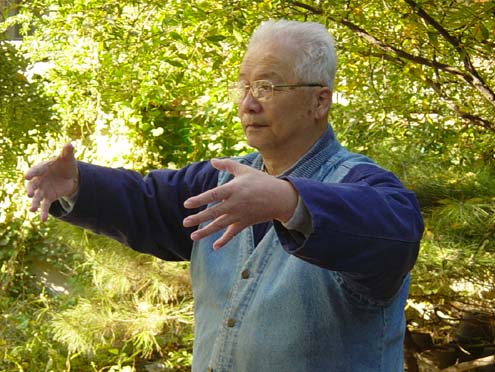
- You can improve very rapidly your physical condition.
- With very good basic techniques you can easily grasp application movement, as movements are direct extensions of stances.
- Solid basic techniques are the necessary foundations for top level techniques.
- They can avoid you from getting harmed or injured during training.
- They can prolong the duration of practice. Through accurate and regular basic techniques training, practitioners can still continue to practice even in advanced age.
- Basic techniques training can enhance the quality of your movements, improving every joint’s elasticity and every muscle’s control. As a result, your movements are more harmonious, presenting their own beauty and in a word your body reaches a state of “highly adaptive while being in perfect control.”
What are the Health Benefits of Standing Meditation?
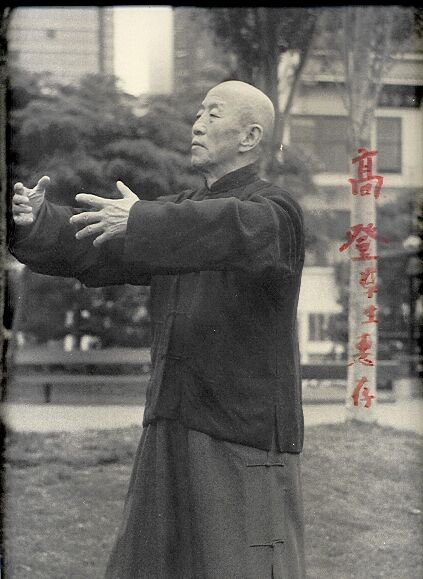
The way that standing meditation positively improves our health can largely be thought of as reprogramming the body. “Hey, hey,” I hear you saying. “I was with you with on the physical and martial topics, but reprogramming the body?” Getting all mystic are we? I have to admit that I was slow to accept this “grand” assertion until I started getting physiological feedback that I couldn’t explain and heard the same explanation from two different sources.
Here is Wang Xiangzhai in his explanation of Zhan Zhuang.
“Yangshengzhuang (health nourishing postures) is a form of cultivating health, kind of basic exercises of internal training. Because the postures and movements conform with physiology of human body, nervous system is resting and is being positively regulated, and at the same time body is trained, the goal of cultivating health and healing can be achieved (it has been proved in practice already).”
Here is Chen Youze, paraphrased from a lecture on the benefits of standing and tai chi over physical exercise.
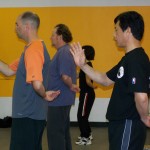
“The heart is a strong muscle that provides all of the blood to the entire body. Deep postures stress the body in good ways to make it stronger and increase blood flow and clean the body through sweat. Running or other exercises do the same thing but stress the heart. Work and life also stress the heart. If we are doing exercise that stresses the heart and have life stress, the heart never gets to relax. Standing [meditation] gives us all the benefits of changing our posture and strengthening the body without stressing the body.”
So back to Grand Master Chen Qingzhou’s original promise: How do we simultaneously improve health and martial ability in 3 minutes/day?
Stand.
You already knew the answer by now but hopefully I provided the needed buy-in so you can give the practice a try for a period of time so that can experience the benefits. There is one more question we need to consider to round out our conversation.
Standing vs. Sitting Meditation, are they the same thing?
The answer here is no. With almost every tai chi activity we can alter the form for people who have an injury or need to sit. This is one exception where the benefits from standing cannot be replicated while sitting. Standing meditation, eating bitter, is difficult for everyone at the beginning. We can do it for a shorter amount of time or we can do it in a higher posture but we are still standing. When we are talking about standing vs. sitting meditation the goals are completely different and it’s not possible to get the same physiological response from sitting meditation.
Do older tai chi masters sit to meditate? Absolutely, but they have years of standing practice that they can potentially generalize to a sitting posture. They didn’t begin by sitting.
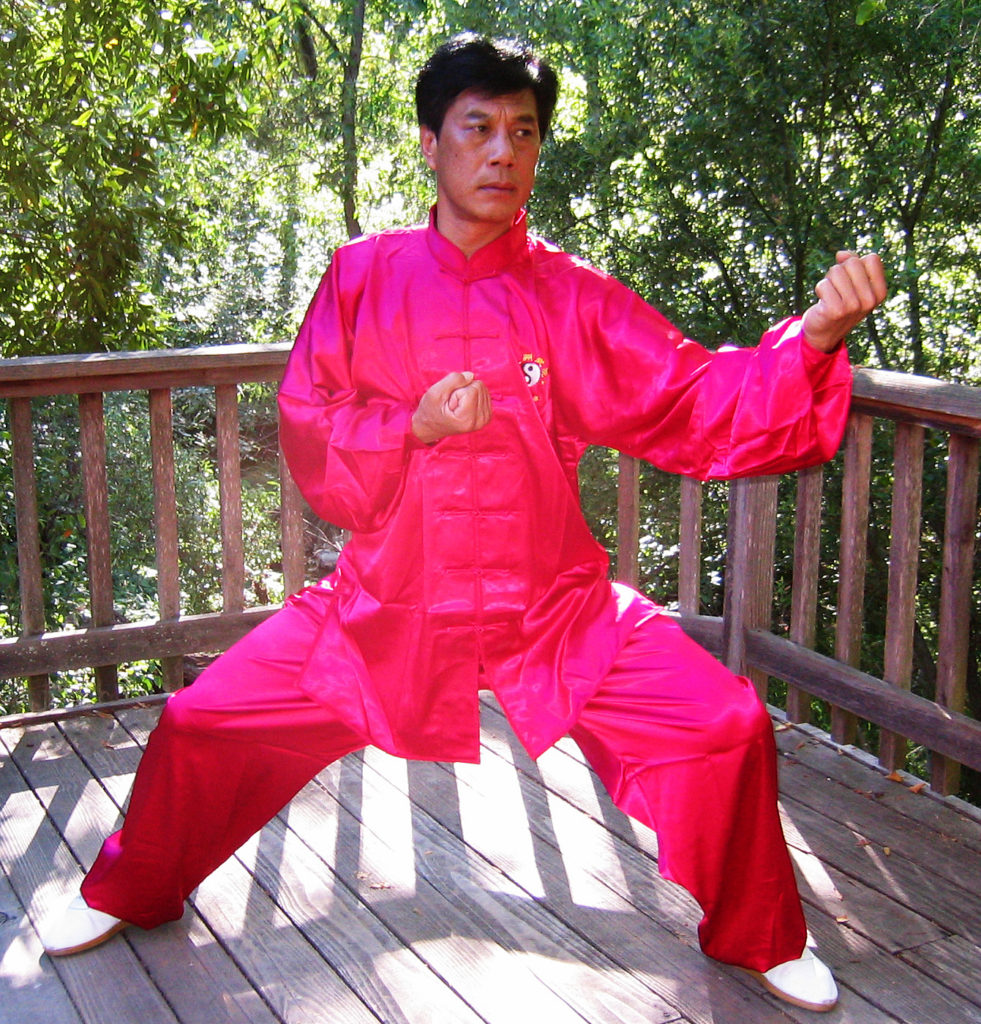
As a side note, the initial conversation with Chen Qing Zhou took place several years ago. Recently his son, Chen Youze, was teaching a seminar on qi gong and meditation. When asked about whether the sets could/should be performed standing or sitting he responded that the sets should always be performed standing except in temporary (injury) or cumulative (age) circumstances. It is hard for everyone at first, but your time will increase. He highlighted some fairly talented masters of Ba Gua and Yang Tai Chi who were now in their eighties and had mobility issues whereas their “tai chi brothers” (a.k.a. his dad) were still very mobile. He felt that this was partly due to the breaking of the posture at the inguinal crease that sitting causes and lack of strengthening the legs.
Can you meditate while standing?
If you were wondering before whether you can mediate while standing, hopefully by now you see that it is not only possible but that there are some advantages to mediation while standing. If you have health related issues that make standing difficult or age related issues, I am going to begin with some advice but don’t completely abandon all hope. One major advantage of the standing meditation is that it builds stamina and helps people heal. You just have to alter some things at the beginning. I am speaking from experience because I have worked through several injuries by using standing meditation to nurture my way back to doing the form.
How to Meditate Standing Up if You Have Back Pain, Age-Related, or Mobility Issues
- Choose a standing meditation posture that is at your full height and not in a deep stance. The easiest standing meditation pose is the “tree hugging” pose (below) because it has the lowest amount of tension on your body. The principles of standing meditation remain the same though. Keep a slight bend in the knees, do not lock the lower back, relax the shoulders and arms, and push the crown of the head upwards for great posture.
- Reduce the amount of time during your meditate while standing. Here, a timer is your friend! Start by trying to stand and stop when you feel pain or fatigue. Even if it is one minute, that is your baseline. The next day shoot for 70 seconds and add a tiny amount each day.
- Do not shorten your overall meditation session. Notice that above I said “while standing.” Sit down and continue to breathe for whatever time is remaining up until 5-10 minutes to begin. Your nervous system takes a short while to calm down and this is accomplished with long deep breathes across several minutes. I have seen many novice practitioners quit their meditation routine because each day it gets longer and longer. So you not only have pain, discomfort, or fatigue while in a standing meditation posture but the whole thing gets longer. If you start with 10 minutes or whatever you can do then you are just changing the percentage of time that you are standing.
- Move the arms occasionally or use more than one standing meditation pose. For some people they can actually stand for a longer period of time but back pain or fatigue is produced from not moving. You can hold the tree pose, shake your arms out, and hold it again. You can hold the tree pose, switch to the triangle pose, and then go back to the tree. If that gets you standing longer, go ahead and make those adjustments. Just keep your breathing deep and posture great.
The 3 Primary Standing Meditation Postures
There are three primary standing meditation poses: Wuji Standing with the hands on the belly or at the side, Tree Pose with the arms out in front and hands facing the chest, and Pole Standing (Zhan Zhuang) which is a deeper posture, traditionally with the left hand behind the back and the right hand in front at eye level. The techniques to practice each pose are the same but each standing meditation posture has a different purpose.
Truth be told, there are A TON of standing meditation postures. Teachers tend to choose the one that helped them progress the farthest. That being said, there are three standing meditation poses that have been used for centuries with science to back them up, available teachers, and lots of examples online. These poses have everything you need. If someone is teaching a different pose it is probably style-specific or is designed to practice a specific martial application such as in Yiquan. A big differentiating factor is palm position. Meditation usually requires the building of energy so palms face the body. Martial stances often have the palms facing away. Let’s talk about the main postures here and then follow for specific techniques for you to practice or improve your standing meditation
Wuji Standing Meditation Posture
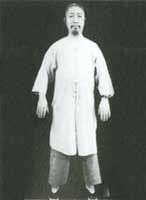
Wuji is a standing meditation practice which calms the mind by reducing runaway thoughts and anxiety, and replenishes the body through deep breaths. It is practiced by standing in a high posture without locking the legs. The hands are traditionally at the side or the palms cover the belly.
Wuji (無極) is the combination of nothing/no/without and the character for pole/extreme. We can think of it as the space before any action movement or thought takes place and exactly what you want to experience when meditating. It is one of the primary tai chi standing meditation postures because tai chi (太極) represents the beginning oneness right before duality begins. Whereas wuji precedes this as nothing and is used to compare your intentional movements with stillness (nothing). So I like to think of it as the potential (taiji) for great things to happen when we leave a rested, aware state (wuji).
Tree Pose Standing Meditation
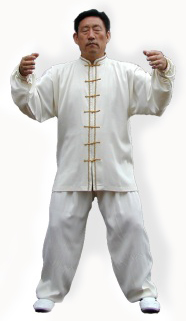
Tree pose standing meditation looks like it sounds with the arms out in front and palms facing you as though you are hugging a tree. I differentiate tree pose from Zhan Zhuang pole standing (below) following the Chen style tai chi tradition. The tree pose can be used in a higher stance for long periods in a gentle meditation. This is the standing meditation posture adopted by most meditation traditions.
Zhan Zhuang Pole Standing

Zhan Zhuang standing meditation traditionally uses an opposing hand position where the right hand is open, about a foot in front of the face and at eye level. The back hand has the fingers together at the level of the ming men. Many practitioners practice this form of meditation using the tree hugging posture which is fine but the intention is very different.
Whereas the fist two postures can be done for as many as 90 minutes, Zhan Zhuang is only practiced for three. It is a very deep posture that leads to immediate leg pain, quickening of the breath, and sweating. You can read more about it here: Comparing Zhan Zhuang (pole standing) and Qi Gong
Standing Meditation Techniques
To properly meditate standing up it is a process of continually scanning your body and and asking: “How’s my…?” How’s my head/face/neck/shoulders, and all the way down. You continually breath deep and return to your body to make needed adjustments. Here’s why: you standing meditation posture will get worse because 1) you are relaxing and your body slumps or 2) you are becoming uncomfortable and your body is looking for relief. You do want to stay comfortable. But, discomfort could be caused by your posture getting worse, your knee moving in front of the toe, or things like that you can easily readjust. So as you stand and breathe deep, mentally travel from the top of your head to your feet with these standing meditation techniques:
- Imagine a thread is pulling up from the top of your head
- Imagine you are listening to a quiet sound right behind your head to move your thinking out of the forebrain
- Soften your face to a slight smile
- Relax the eyes with the lids down so that you can only see out of the lower third
- Touch the upper palate with your tongue
- Put your teeth gently together
- Close your mouth and breath through your nose unless you are using tones
- Drop your shoulders
- Sink your chest in tiny bit
- Relax the arms with elbows pointing to the ground
- Leave space in your armpits (like you have a racquetball in there) to promote blood flow
- Soften and press out your lower back a bit, this should cause the pelvis to tilt flat
- Let the belly out. You are not taking a picture so stop sucking it in!
- Hinge at pelvis, don’t lock your legs
- Pull down from the tailbone with an imaginary thread, opposite the one from the crown of the head. You should feel your spine expand
- Slight bend to the knee
- Toes can be slight pointed out or straight
- Knees can pass the toes depending on which standing meditation poses you are doing but not too far
- Weight should be evenly distributed on your feet with most of your weight on your heals. If you are doing the deeper pole standing, you may feel like you are tipping back
- Continually push up from the ground through the top of your head
A word of warning with the examples that I see online. There are a lot of examples online that are not correct. Shoulders are high, elbows are bent too far, armpits are closed, the body is swaying, the body is leaning forward… What I think is happening is that practitioners are starting to reap the rewards of meditation while standing and are eager to share before they have everything sorted out. As a general rule, look for tai chi grand masters or masters that are older. Videos aren’t even really needed. Take the list of standing meditation techniques above and just visually scan their bodies. How are their elbows? How is their neck? We need everyone on the planet to be meditating and I don’t want to discourage anyone’s efforts. On the same token, we also have to make sure that you get off on the right foot with your standing meditation routine.
Further Reading and Resources:
Read our next article: Comparing Zhan Zhuang (pole standing) and Qi Gong
- The Way of Energy by Lam Kam Chuen
- Wikipedia: Bone Marrow
- Photo of Chen Qingzhou American Chen Taiji Society


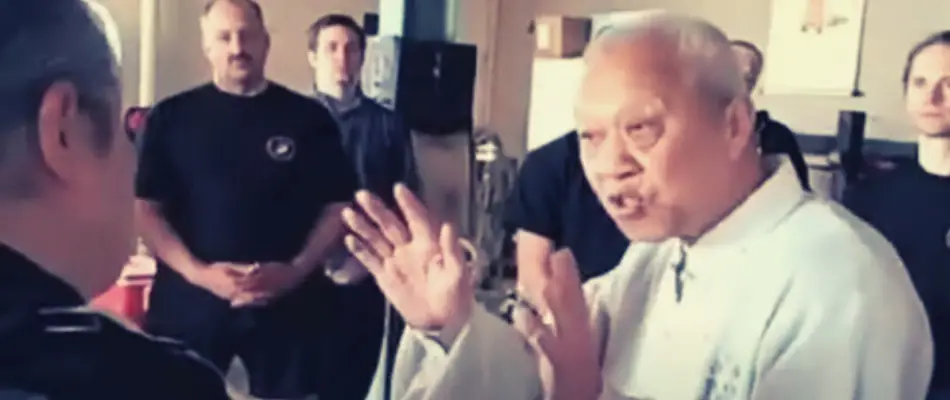
Thank you for wonderful writing and clear explanation.
With many years of doing tai chi and qigong, you gently and clearly stress what I’ve been trying to accomplish all these years.
Many thanks!
Glad this registered for you. I firmly believe that many more westerners will adopt tai chi and internal arts as part of their lifestyle if we can bring new-comers and enthusiasts to an understanding of what they are doing more quickly. That and if practitioners experience tangible results. Check out the pdfs. referenced in the two Zhan Zhuang articles. They are packed with insights. Yours in health, S.
hello
I don’t understand how you do the technique standing when you have injury as I do at moment as you saY to do it sat down??? How do you do this SAT DOWN PLEASE
paula
how do you do it sat down please? I HAVE KNEE INJURY
Hi Paula, The best written text on sitting meditation (I feel) is Awaken Healing Energy through the Tao. It is really practical and shows how to achieve great results sitting. He doesn’t prescribe any exact sitting stance but talks about comfort and what you should be focusing on. Check it out on Amazon.
Try a balance ball?
Yes, this is good to keep good posture. Don’t compromise the knees though, even with the ball.
I started practice of standing some years ago when I went to a free “tai chi” class offered by students of the late W Chen in Pearl river NY. It was at a public library. The class started with people positioned in a circle and just standing there. I wondered if this was tai chi? In fact, the teacher didn’t actually speak, he just stood there and others followed what he looked like as well as they could. It was mysterious.
I attended for a year or two and finally becamer more or less “comfortable” with the postures.
Now, after about eight years practicing alone every day for one hour, I can say that everything said above, and more, is completely true. And I can add that if a person has difficulty with sitting meditation because of sleepiness, this is a wonderful alternative.
I couldn’t agree with you more and at the same time think my typing here doesn’t make the point. Like you, I think that you have to stand every day for a short amount of time. I am talking abut 3 minutes/day for 3 weeks and you will understand how powerful this is. Our tai chi class starts in a circle and we do silk reeling and then standing. New students are looking around like “what the he%$ is going on here.” It is my favorite part of the class though. When else do you get to share 15 minutes with a group and mentally commit to have good intentions? Church maybe. Class starts at 7:30 pm and I come tired, frazzled, exhausted from the day. By 7:45pm I am in a completely different place and energetic until class concludes at 9. Sometimes I rely heavily on the class (mentally) to bring me out of my stupor. When I show up feeling good I mentally image that I am empowering those around me because maybe they need the support that night.
zhan Zhuang is a progressive system
and is highly effective.
had a left hip operation in may 2015 and have been practicing every day since.
start with 3 min then add 3 min every 3 days.
30 days = 30 min.
after one hour your white and red blood cells double and increase your hemoglobin .
I forgot to mention I been diagnosed with osteoarthritis in my lumbar ,my right knee and right hip.
I should be on crutches and having injections in my back but thanks to standing still I can walk pain free and even stand on one leg for 5 min (advance postures).
I,d advise taking lessons to start to ensure your postures are reasonable and to gradually increase your time you are training your posterior muscles or retrain this takes time.
the good news is the posterior muscles have far more energy potential(storage)/ chi/bio energy/ which exerts a massive influences on your immune system,your brain, and all your cells.
I’ll repeat myself one hour zhan zhuang doubles your blood cell count!!!! WOW
this has untold health benefits.
unlike other exercise you can practice when you are ill it helps you recover and is quite safe to do so. there are various lying postures and sitting postures.
I practice for 5 wks prior to hip op and was out after two days
Thank you for sharing concrete results and reasons why you invested time into your standing routine. Here is an art that we can all benefit from with no equipment needed or initial level of physical health. And thank you for mentioning the teaching. Getting postural correction from a teacher helps in two ways. The benefits come sooner and because of this you are more likely to believe it is doing some good and stick with it.
I would like to try this as I have an injured left leg Is there pictures of the proper stance It looks a bit like the kiba dachi stance I learned as a kid in karate ?
Thank you
Hi Jack,
Your memory at seeing the stance I feel is correct. Kiba Dachi is a karate stance with both inguinal creases open. All tai chi stances are this way but many karate stances close one or both down. In tai chi we refer to the Kua but speaking here it would be something like like Groin-area Joint. By keeping both creases open you retain power and blood flow to both legs. This standing not that low though.
I would consider looking into the 3 resources mentioned at the bottom of the article. With an injured leg your progress might be a bit different. You may have to alter your height and the duration but you would definitely benefit from Zhang Zhuang. My concern for you is that ZZ standing can cause what feels like pain. It is a desired burning of the thighs and sometimes shaking. However, you should not push yourself towards a pain that would be from an injury. If your injured leg causes pain, make sure you know what those symptoms feel like and don’t move in that direction. Stand higher and for a shorter amount of time and work progressively.